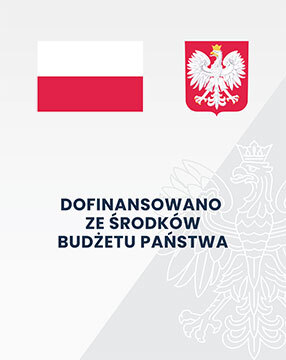Teoria i praktyka opracowania rzeczowego dokumentów ikonograficznych w dużych kolekcjach bibliotecznych
Paweł Rygiel
Afiliacja: Biblioteka Narodowa, Polska
Abstrakt
W artykule omówiono teoretyczne podstawy opracowania rzeczowego dokumentów ikonograficznych oraz wybrane standardy opisu i narzędzia indeksowania. Wskazano problemy, z jakimi można się zetknąć podczas analizy i interpretacji przedstawień, doboru terminów opisowych oraz zapisu tych informacji. Zaprezentowano sposoby opisu rzeczowego dokumentów ikonograficznych w zasobach Library of Congress. Na przykładach dokumentów z Biblioteki Narodowej przedstawiono schemat opracowania rzeczowego dokumentów ikonograficznych w zbiorach bibliotecznych, który zapewniłby wszechstronny i skuteczny dostęp do tego typu zasobów.
Słowa kluczowe
Dokumenty ikonograficzne
Deskryptory Biblioteki Narodowej
Biblioteka Kongresu; Biblioteka Narodowa (Polska); 2001-; Biblioteki; Dokumenty ikonograficzne; Katalogowanie rzeczowe; Opis bibliograficzny; Zbiory specjalne; Polska; Stany Zjednoczone (USA);Bibliografia
C. Jörgensen: Image retrieval: theory and research. Lanham; Oxford 2003; B.J. Jansen: Searching for Digital Images on the Web. “Journal of Documentation”, 2008, vol. 64, issue 1, pp. 81-101.
M. Springer , [et al.]: For the Common Good: The Library of Congress Flickr Pilot Project, 2008 [online]. [dostęp 29.04.2012]. Dostępny w World Wide Web: http://www.loc.gov/rr/print/flickr_report_final.pdf
M. Chu, A. O’Brien: Subject analysis: the first critical stages in indexing. “Journal of Information Science” 1993, vol. 19, no. 6, pp. 439-454; F. W. Lancaster: Indexing and Abstracting in Theory and Practice. 2nd ed. London 1998, pp. 8-19
K. Matusiak: Towards User-Centered Indexing in Digital Image Collections. “OCLC Systems and Services”, 2006, vol. 22, issue 4, p. 285.
E. Panofsky: Studies in Iconology: Humanistic Themes in the Art of the Renaissance. New York 1939.
S. Shatford: Analyzing the Subject of a Picture: A Theoretical Approach. “Cataloging & Classification Quarterly” 1986, vol. 6, no. 3, pp. 39-62.
S. Shatford: Analyzing the Subject of a Picture: A Theoretical Approach. “Cataloging & Classification Quarterly” 1986, vol. 6, no. 3, pp. 48-54
B. Hjørland: Towards a Theory of Aboutness, Subject, Topicality, Theme, Domain, Field, Content..., and Relevance. “Journal of the American Society for Information Science and Technology” 2001, vol. 52, no. 9, pp. 774–778.
M.L. Zeng, M. Žumer, A. Salaba (Eds.): Functional Requirements for Subject Authority Data (FRSAD). A Conceptual Model. München 2010, p. 7-8.
P. Ingwersen: Cognitive Perspectives of Document Representation. In H. Bruce, et al. (Eds.) Emerging Frameworks and Methods: Proceedings of the Fourth International Conference on Conceptions of Library and Information Science (CoLIS 4) , Greenwood Village, Colo. 2002, pp. 293-294.;
M. Baca et al.: Cataloging Cultural Objects: a guide to describing cultural works and their images. Chicago 2006.
Subject Indexing for Pictures: An Overview, compiled by Helena Zinkham, 2002; last rev. 2004 [online]. [dostęp 30.04.2012]. Dostępny w World Wide Web: http://www.loc.gov/rr/print/tp/Subject%20Indexing%20for%20Pictures.pdf
Subject Indexing with TGM: A Case Study in Selecting Access Points for Photographs, compiled by Karen Chittenden, February 2004 [online]. http://www.loc.gov/rr/print/tp/SubjectAccessHineCaseStudy.pdf
Ogólne zasady wyboru słów kluczowych w publikacji: ePoradnik redaktora zasobów cyfrowych,wersja z dnia: 2008-07-03, opracowany przez pracowników Biblioteki Uniwersyteckiej we Wrocławiu, [online]. [dostęp 30.04.2012]. Dostępny w World Wide Web: http://www.bibliotekacyfrowa.pl/dlibra/docmetadata?id=25069&from=publication
Format MARC 21 rekordu bibliograficznego. Dokumenty ikonograficzne. Wersja 2008, oprac. A. Pietrzak. Warszawa 2008. Centrum NUKAT w swojej adaptacji formatu pomija to zagadnienie, zob. Format MARC 21 rekordy bibliograficznego dla dokumentu ikonograficznego, oprac. K. Sanetra, Saletra. Górecka, A. Graff. Warszawa 2011. [online]. [dostęp 04.05.2012]. Dostępny w World Wide Web: http://centrum.nukat.edu.pl/images/stories/file/instrukcje_procedury/MARC_21/marc21_ikonografia_110607. pdf
M. Baca (ed.): Introduction to Art Image Access: Issues, Tools, Standards, Strategies Los Angeles 2002. [online]. [dostęp 28.04.2012]. Dostępny w World Wide Web: http://www.getty.edu/research/publications/electronic_publications/intro_aia/index.html
P. Harpring: Harpring P.: Introduction to Controlled Vocabulary: Terminology for Art, Architecture and Other Cultural Works. http://www.getty.edu/research/publications/electronic_publications/intro_controlled_vocab/index.html
http://www.steve.museum/
http://www.loc.gov/pictures/
E. Svenonius: Access to nonbook materials: the limits of subject indexing for visual and aural languages. “Journal of the American Society of Information Science” 1994, vol. 45, no 8, pp.600-606
H. E. Roberts: A Picture Is Worth a Thousand Words: Art Indexing in Electronic Databases. “Journal of the American Society for Information Science and Technology” 2001, vol. 52, no 11, pp. 911-916.
K. A. Schroeder: Layered indexing of images. „The Indexer” 1998, vol. 21, no 1, pp. 11-14
C. Jacobs: If a Picture is Worth a Thousand Words, then.... “The Indexer”, 1999, vol. 20, no 3, pp. 119-121.
http://cyfrowe.mnw.art.pl
Afiliacja: Biblioteka Narodowa, Polska
CC BY-NC-ND 4.0 Uznanie autorstwa - Użycie niekomercyjne - Bez utworów zależnych 4.0 Międzynarodowe





